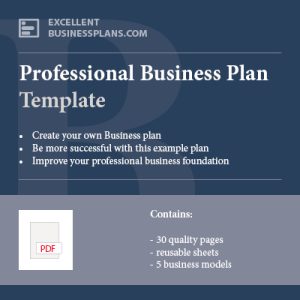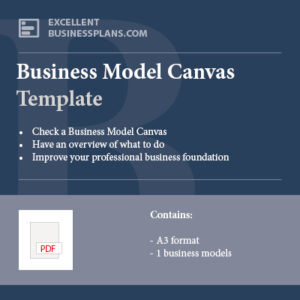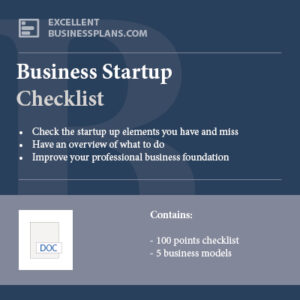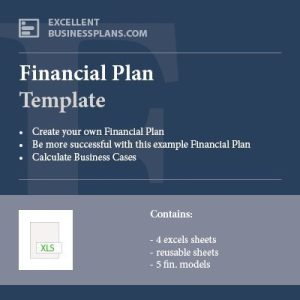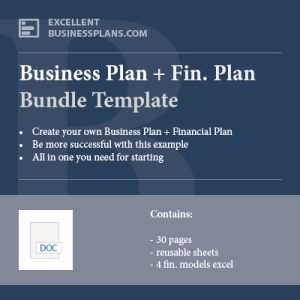Sometimes you need a bit of explanation what it all means. Find a helpful list of business terms and definitions here.
Business in general
1. Enterprise
Enterprise is a project or undertaking which is risky, difficult and complicated and requires energy and boldness. An enterprise is also accompanied with resourcefulness and initiative.
2. Start-up
A start-up is any initiative of new business venture or project. It is the initial stage of enterprise’s life cycle where the owner convert the idea in to operations to secure the finance associated with the specific venture.
3. Business Plan
It is a detailed plan about the operational and financial objectives of a business and the strategy to achieve these objectives in an effective and efficient manner by using the available resources.
4. Lean Start-up Method
It is based on the concept of lean manufacturing in which a company manufacture or develop a product for which the customers have already shown their desire to buy. Lean start-up method is used for target the existing market.
5. Chamber of Commerce
It is a form of local business network which is intended to protect and promote the interest of the business community of the particular region.
6. LLC.
The limited liability company is a specific corporate structure where the pass through taxation of sole proprietorship and partnership are combined with the limited liability to the company. The members of LLC can’t be held personal liable to the liabilities and debts of the company.
7. Ltd.
In a limited company the shares of the company are offered to the members and therefore the liabilities of each member depends on his/ her investment in to the company in form of share owned by the particular member.
8. Joint Venture
It is a separate business venture where two or more members having specific identitie , comes together to achieve the specific shared goal by combing their resources.
Business Strategy
9. Business Model Canvas
The Business Model Canvas is a set of templates of lean setup and a tool to use strategically and manage a new and a already existing business. It is based on the chart that consists on value position of a product or a firm.
10. Blue Ocean Strategy
A blue ocean strategy represents an approach in which an organization enters into the market with a completely different product that does not have any competition with any other organization in the market. Therefore, the product differentiation sets an irrelevant competition. In this strategy, the business breaks the value-cost trade-off.
11. SWOT analysis
In SWOT analysis, the organizational Strength, Weakness, Opportunities and Threats are analysed. SWOT are the analysis that are used to create understanding about the market by addressing the internal strength a weakness of a company in regards of market situation. SWOT analysis could be used by a new business as well as it is used by old business to make business integration by addressing the business related trends and by creating understanding about the capacity of a business.
12. CRM (Customer Relationship Management)
Customer relationship management is a system used to manage customers in an effective way. A CRM system is used to save customer’s time and retaining and satisfying customer through effective management. Often the heart of the business.
13. Porter’s – 5 Forces Model
Porter’s Five forces modes is used to create understanding about the competition that an organization is facing or might have to face in an industry. To create understanding about the competition there are five forces that are used as follow;
- Industry Rivalry
- Bargaining power of Supplier
- Bargaining power of Buyer
- Threat of new Entrant
- Threat of Substitute
14. DESTEP Method
DESTEP method is used as a method in which a company analyses the market for a product or a business by addressing the following factors of external environment; Mapping trends helps you to look forward of what’s happening so you could already adapt to it.
- Demographics
- Economic
- Social
- Technological
- Ecological
- Political
15. 4P’s
4Ps is a marketing strategy used by the business to introduce their product in a market. 4Ps is based on; Place, Product, Price and Promotion.
16. Business Eco-system
Business Ecosystem is based on network of companies that are working together for a business. The business ecosystem is based on the network of suppliers, manufacturers, distributors and other companies that are associated with the business.
17. Lean Start-up Method
This method is used as a tool of business development and it consist on the lean manufacturing methodology that adds value in the business or product quality by reducing cost and increasing or maintaining high quality.
18. Alliances
An alliance is also known as strategic alliance in which two or more parties work together on mutual objectives but remain independent.
19. Pivoting
Pivoting is a business strategy usually used by start-up organizations for managing organizational risk whereas it is also used by the existing businesses. According to this strategy in case of ineffective working of a model, the management opted to Plan B.
20. Minimal Viable Product (MVP)
This is a development strategy in which the business used to introduce a new product by maintaining same features of a product and support it with some additional features to gain the satisfaction of customer. This type of strategy develops its design on the base of the feedback on their product from their potential customers.
Financial Planning
21. Cash flow (CF)
It is the net amount of incoming and outgoing cash or cash –an equivalent representing a business’s operating activities. It is associated with the opening and closing balance of the company.
22. Profit & Loss statement (P&L)
P&L is commonly known as income statement. Companies have to share their Profit & Loss statement after a specific period of time usually quarterly or annually basis. P&L statements is consists of the company’s expenses, revenues and the loss and profits occurs during the period of time.
23. Exploitation Budget
Exploitation budget is a strategy used by an organization according to which an organization increases its budget when an organization is doing good in a business.
24. Valuation method
It is a process of determining the current worth of a company or its assets. A valuation method is based on the asset’s fair market value eliminating its liabilities. Many different valuation methods are used to determine the existing worth of a company or its assets.
25. Interest
It is the amount of money charged for using the money lent or delaying a debt’s repayment. it can also refer as the amount that a stockholder owns in an company. It usually expressed as the annual percentage rate of the actual amount.
26. Liquidity
Liquidity of an assets refers to teh degree to which the security or the assets can be brought or sold quickly in the market where the price of the assets wont be affcted.
Customer Centricity
27. Persona
Understanding of customer’s need and demand is the key of success for any organization. Subsequently, the characteristics of the customers regarding your business or product are called a persona. Persona is of two type’s buyer or customer persona or user persona.
28. Customer Journey Mapping
A customer journey map is based on the step by step processes through which a customer get engage with a business.
29. USP (Unique Selling Point)
Unique selling point represents the uniqueness of a product that attracts customers to preferably buy your product as compare to other competitor. Low cost of a product is an example of a unique selling point.
30. CRM system (CRM)
CRM system centrally focuses on the customers in which an organization attempts to improve its relationship with its customer through effective customer management techniques. The focus of CRM is to save customers time and improve relationship between customer and organization.
31. Netto Promotor Score (NPS)
This is used as a customer relationship management tool through which an organization evaluates the loyalty of their customers by addressing the salient features of gaining customer loyalty.
32. ABC analysis
it is also known as Activity Base Customer analysis. In this approach, the organization analyse its customers activity to develop further planning regarding the product promotion.
33. Pareto (80/20) rule
According to this rule the Italian Economist Vilfredo Pareto claimed that 80% of outcome is received by 20% input which means that most of the results could be determined by small causes.
34. Loyalty
Customer loyalty represents the continuous emotionally and physically satisfactory response of a customer towards a product or a business of an organization.
35. Churn Rate
The Churn rate represents the annual rate at which a customer subscribes to a service in a specific period. Business organization usually uses this approach to expand its clientele.
36. MRR Rate
MRR rate represents Monthly Recurring Revenue that represents the overall income of a company after subtracting all the expenses that a company received in a month.
Getting Capital / Investors
37. Bootstrapping
The situation in which a business starts its business with minimum capital or investment is called bootstrapping. The company is trying to construct a company from the owner’s equity or from the operating revenues. It is more beneficial as compare to the venture capital.
38. Venture capital
Venture capital is a type of investment at early stage or initial development of the business. It is the type of the finance for emerging companies which has growth potential in the market. The capital comes from the financial institutes, general public and the high profile investors.
39. Seed funding
Seed funding is also known as the seed capital. The seed funding comes from the securities offering to the initial public during the start-up of the company. This is also the way or method to collect the finance for the successful start of the new business. The investors invest the capital or exchange share in the company for future financial benefits.
40. Series-A funding
Typically it is named the collection of the finance as the initial investment of the organization at the first round. This is the financing at the start of the company when the seed funding is already provided to the business. On the other hand, investors have the less influence in this kind of the funding.
41. Fundraising
Fundraising is defined as the collection of the finance from different sources in the market. This includes the offering of the shares, debentures, securities and surety bonds to the public and stakeholders. The main purpose is to generate the finance for the investment in the company for its survival or business growth.
42. Business Valuation
Business valuation or the financial valuation is the present value of assets in the market. Different techniques are used to determine the value of the business or finance. It also includes the valuation of the capital composition of the organization or the business. It mostly includes the tax valuation, financial reporting, litigation and tax liability.
43. FCF valuation
It is present value of Free Cash Flows. It determined that how much cash is paid to the stakeholders, suppliers or settlement of accounts payable. In addition, it also records about the incoming of the cash from different sources in the business. Alternative dividend is the famous method of its valuation.
44. Term Sheet
Term Sheet is defined as the agreement which is made for the basic terms and conditions which help to make the investment. This is important in the business to keep the record and check and balance in the investment. Legal consultation is necessary for the drafting of the term sheet or the agreement of investment between two parties.
45. Investor
Investor is that person who brings the capital and money in the business. He allocates the financial sources to the business so that all the operations will run smoothly. The main purpose of the investor is to earn profit from the investment he made in the business.
46. Equity
Equity is the interest of the ownership. This includes the investment or finance to the business. The part of the investment as liquid assets or physical assets is the equity of the investor or the owner. In addition, it is also mentioned in the balance sheet of the company so that stakeholders come to know about the personal investment of the owner.
47. Pitch
The pitch is a book of marketing presentation by the banks around the world. It is a sales representation by the financial investment bank for the review of the management and the current clients. In addition, this book also contains the important attributes of the company which also helps to sale its products or services.
48. Pitch Deck
It is the template of the presentation made or formed by the professionals with help of power point. This contains the method and ways to contact to the investors or the people to sale the products or services a company offers in the market. This is the method of representing the information as a summary.
49. Due Diligence
It is the audit or investigation of the potential investment or about eh product in order to confirm all the facts about it. It is the review of the financial records and transactions. In simple words, it is called the reasonable person which take cares about the financial transaction or agreement with the other partner or party.

